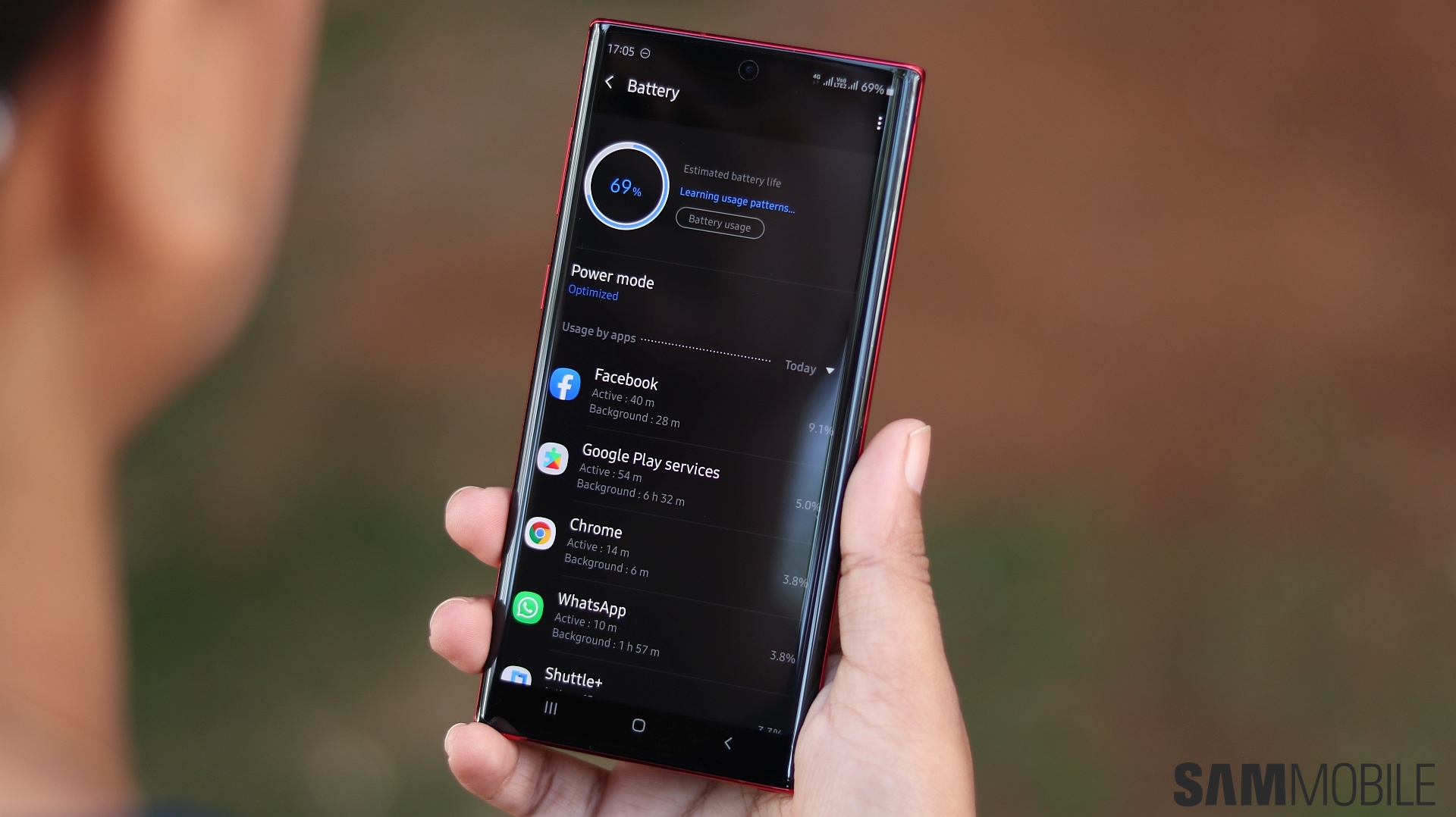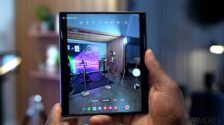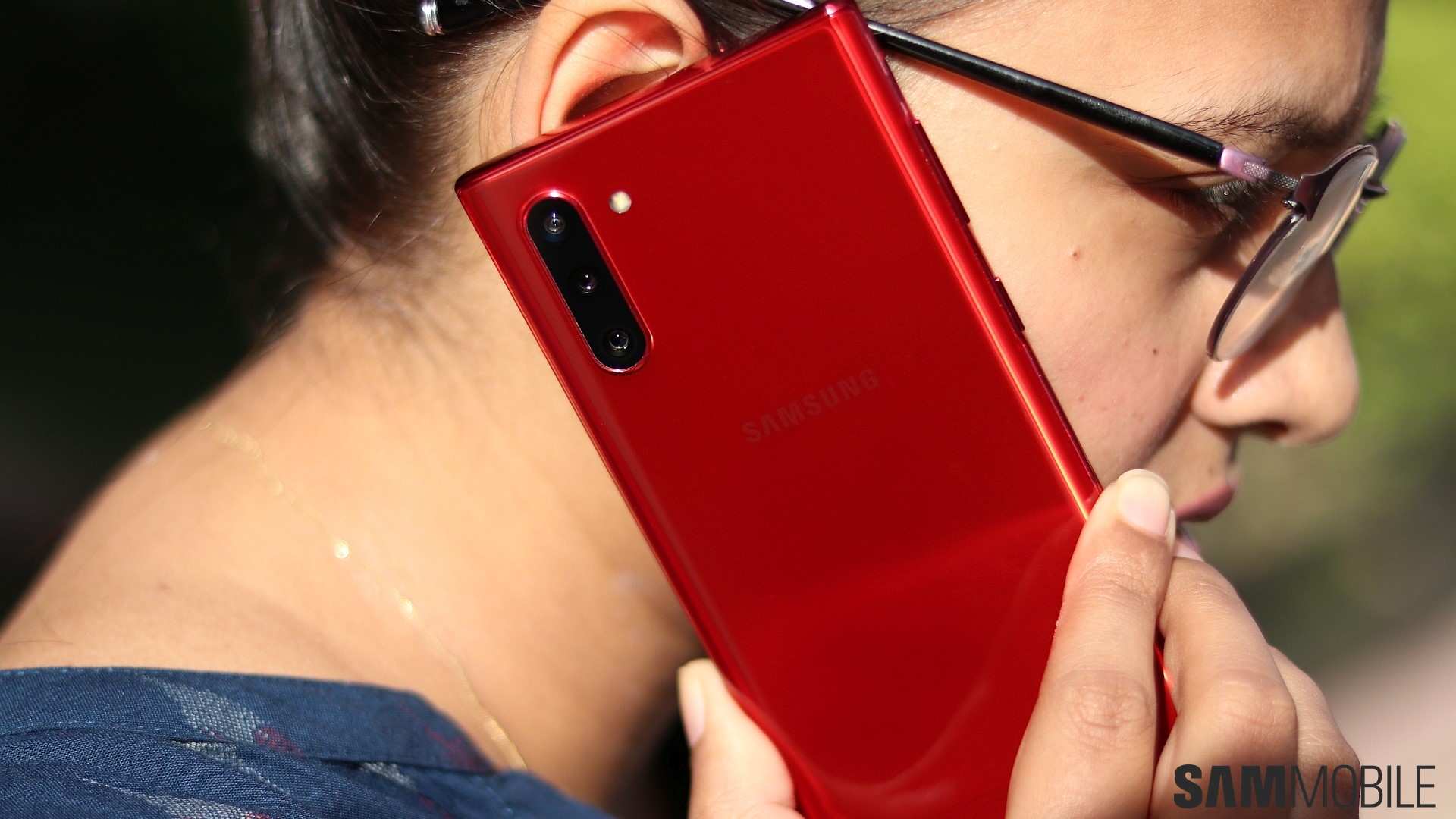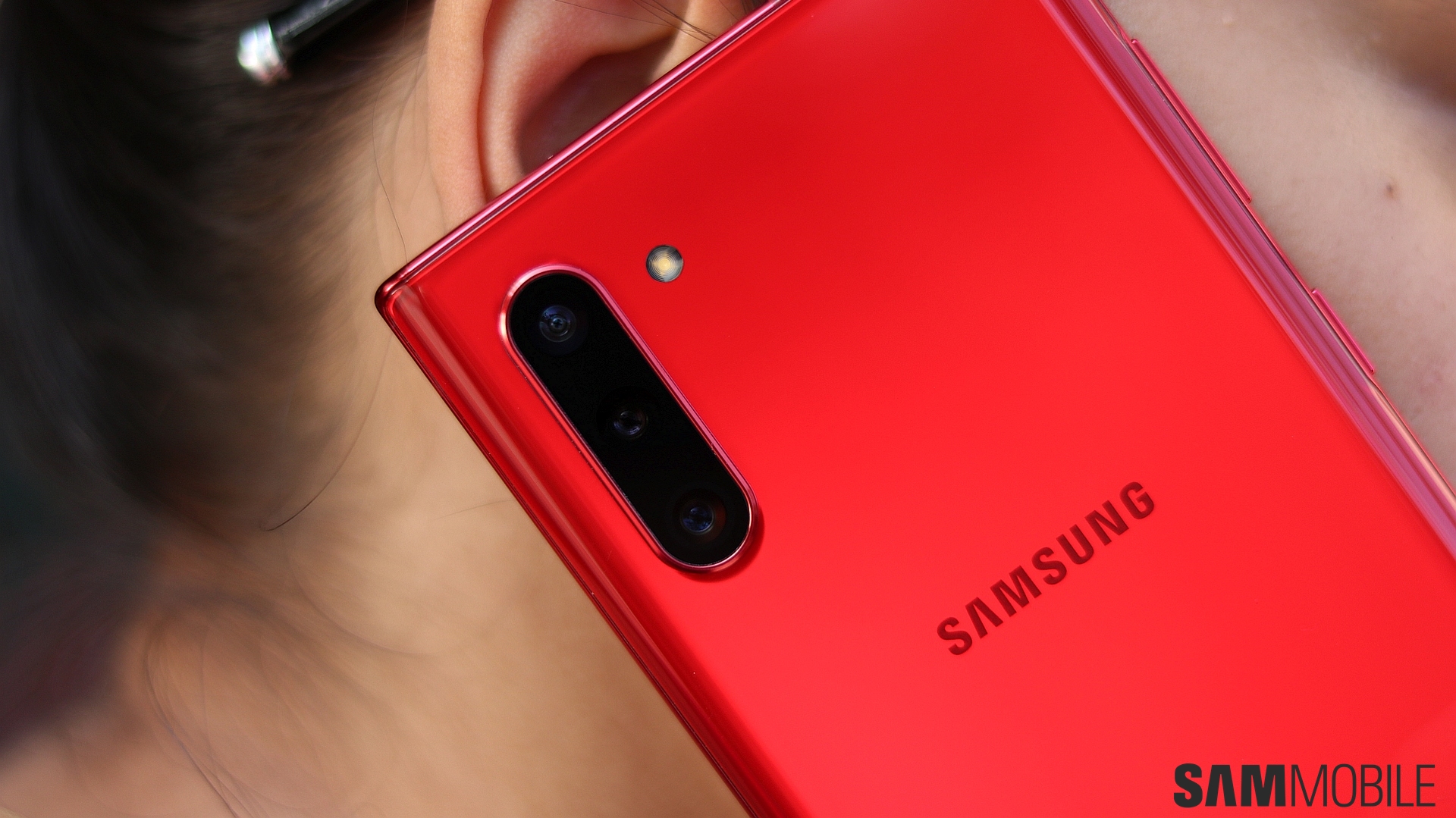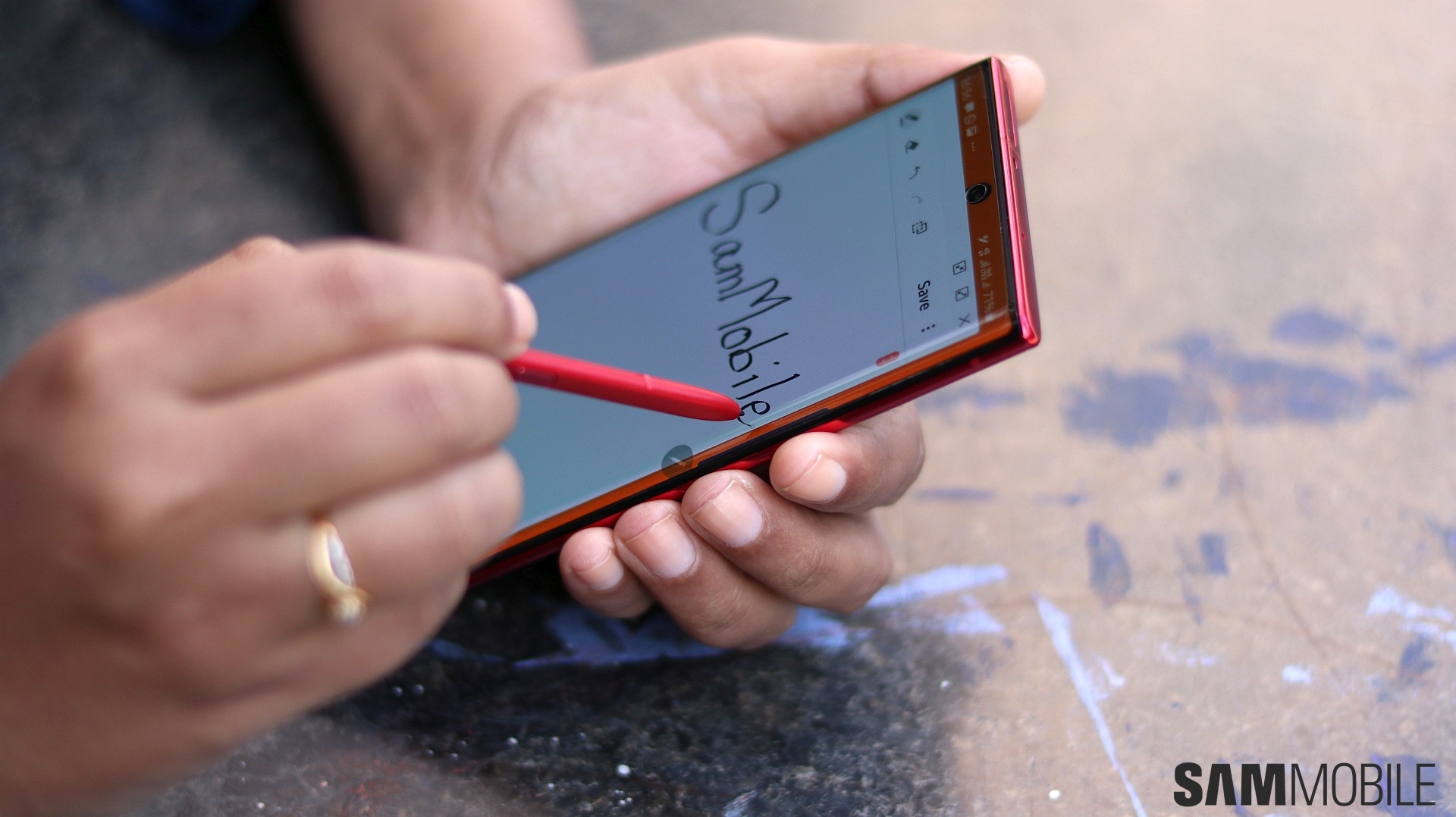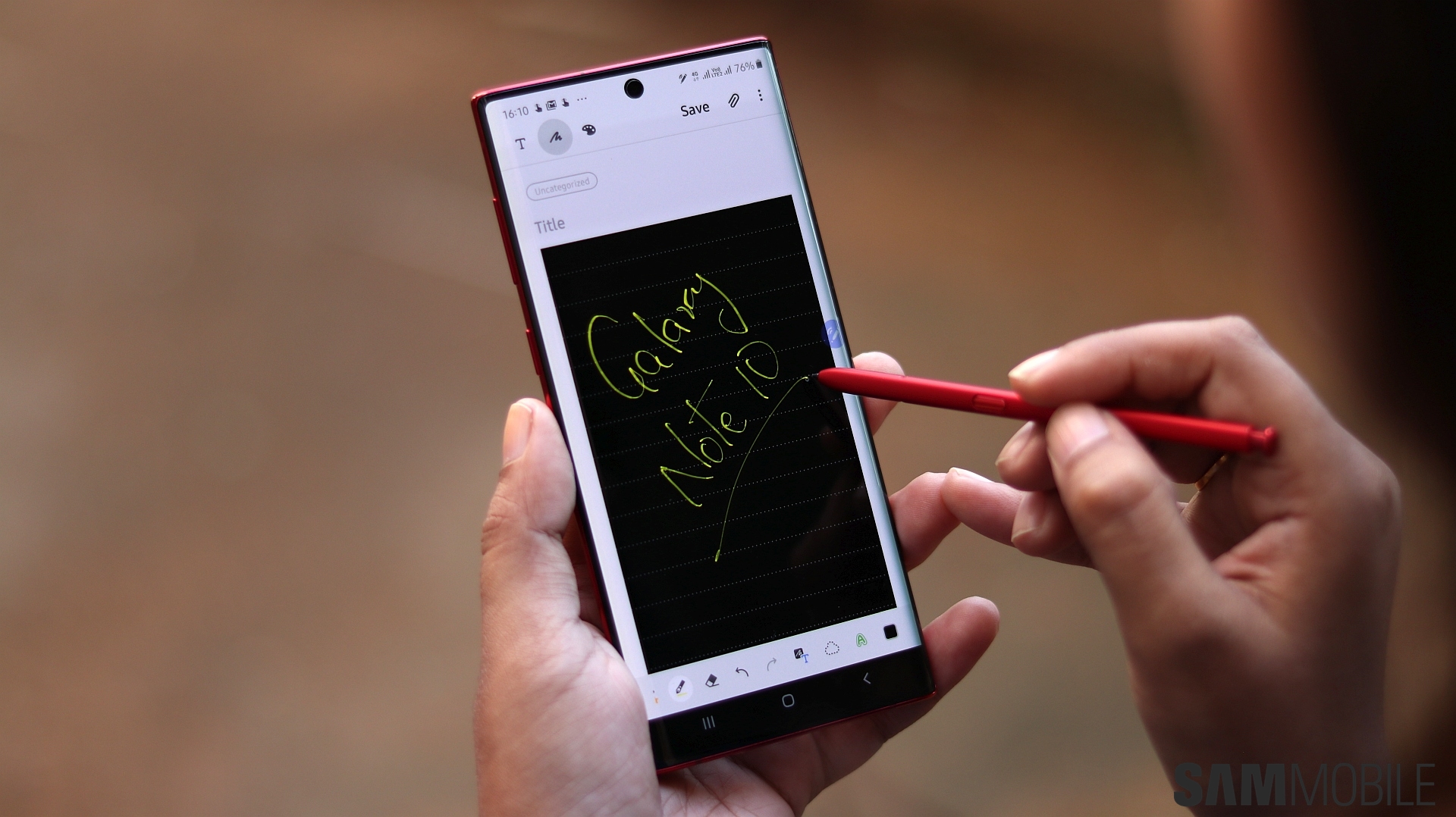Introduction
Borrowing a trick from the Galaxy S lineup, Samsung launched the Galaxy Note 10 in two size variants: Note 10 and Note 10+. The former is a regular or smaller version, while the latter is a bigger and beefier model that is a true successor to the much-loved Galaxy Note 9.
The plus variant is an uncompromising flagship and the best Samsung has to offer in 2019 if we exclude the niche Galaxy Fold. The positioning of the regular Note 10, however, doesn’t fit into the traditional definition of a Note model. It skimps on a few key specs when compared to the larger model.
Design
Like every other Galaxy flagship in recent years, the Galaxy Note 10 has a glass back and a metal frame. Samsung has used Corning Gorilla Glass 6 for increased durability and scratch resistance. The device weighs 168 grams and measures 151 x 71.8 x 7.9 mm, making it both smaller and lighter than the plus model. The size and the weight are the only two things where the regular model differs from the larger variant in the design department.
The Galaxy Note 10 has tiny bezels since Samsung has opted for a small centered punch-hole camera. This gives the device a rather impressive screen-to-body ratio of 90.9%. The left side of the device has a volume rocker and a power-cum-Bixby key, while the S Pen, speaker grille and USB Type-C port can be found at the bottom. The SIM tray can be found at the top, but unlike the Note 10+, there is no microSD slot. Both the Note 10 and Note 10+ lack a 3.5mm headphone jack.
The back of the device is dominated by the vertically-arranged triple-camera system at the top left corner with an LED flash next to it. There is Samsung branding in the middle and some regulatory information towards the bottom.
Specifications
The Galaxy Note 10/10+ share many of the same specs, but they also differ in some key areas. The differences come down to the display size and resolution, RAM and storage options, and battery capacity and charging speed. In all these areas, the regular Note 10, unsurprisingly, is inferior to the larger model.
The Note 10 sports a 6.3-inch FHD+ Dynamic AMOLED display, which is not only lower resolution than the Note 10+ but also the Note 9. Similarly, the 3,500 mAh battery in the Note 10 is smaller than the battery capacity of the Note 10+ and the Note 9. The support for 25W fast charging is an upgrade compared to the Note 9 although it still falls short of the Note 10+’s 45W fast charging.
The Note 10 comes with 8GB of RAM and 256 GB internal storage (no microSD support), which is higher than the base storage of the Note 9 and lower than that of the Note 10+. The smaller Note model also lacks the ToF sensor found on the larger model.
Rest of the Galaxy Note 10 specs match with the plus variant, which means an Exynos 9825 or a Snapdragon 855 SoC, triple cameras on the back, single selfie shooter, in-display fingerprint reader, Samsung Pay with MST support, IP68 water and dust resistance, Dolby Atmos sound, Wi-Fi 6 support, and more. It runs Android Pie with Samsung’s latest One UI 1.5 on top. The regular Note 10 also has a 5G version, but it appears to be limited to South Korea.
Display
The display has always been one of the main attractions of the Galaxy Note lineup. While the Note 10+ caters to this market, the regular model takes a slightly different approach with a relatively small and lower-resolution display. It is still a top-notch panel though, but there is no denying it is theoretically inferior to the Note 10+ in a couple of areas.
The Note 10 comes with a 6.3-inch Dynamic AMOLED Infinity-O display of 1080 x 2280 resolution, giving it a pixel density of ~401 PPI. It supports HDR10+ and incorporates an ultrasonic in-display fingerprint reader for authentication. It has a small punch-hole camera cutout at the top, enabling Samsung to make the bezels even smaller than its predecessors.
Camera
The Galaxy Note 10 and Note 10+ have nearly identical camera hardware and features. The only noticeable difference is that the plus variant has an additional ToF sensor for better bokeh effects and a few augmented reality features.
The Note 10’s triple camera system on the back consists of a 12 MP Dual Aperture (F1.5/F2.4) primary camera, 12 MP f/2.1 telephoto lens for 2X optical zoom, and a 16 MP f/2.2 ultrawide camera. Both the primary and telephoto lens have OIS (Optical Image Stabilisation) and PDAF (Phase Detection Auto Focus). For selfies, the Note 10 comes with a single 10 MP camera that is capable of 4K video recording.
In terms of new camera features, the Note 10 comes with a Zoom-In Mic option that allows users to amplify the audio emanating from the subject when recording a video. There is also an AR Doodle feature that enables users to draw over a subject in the camera viewfinder. The front camera, meanwhile, gets a dedicated Night Mode for better low-light selfies.
S Pen
It wouldn’t be a Galaxy Note without the S Pen, so even the smaller model has it, and it is the exact same stylus that comes with the Note 10+. Last year, Samsung added Bluetooth support to the S Pen, turning it into a mini remote for the Note 9. With the Galaxy Note 10, the company went further and added an accelerometer and a gyroscope to the S Pen, turning it into a kind of magic wand to control various functions on the phone.
The new stylus allows users to perform Air Actions like switching between the front and the rear camera, moving between camera modes, zoom in and out, browse through images in the gallery, control YouTube videos, etc. The company also made the Air Actions available to third-party developers through an SDK.
You can read our exhaustive Galaxy Note 10 S Pen features piece to learn about all the new stylus tricks.
Software
The Galaxy Note 10 runs Android Pie with Samsung’s latest One UI 1.5 on top. The experience here is largely similar to what you find on other devices running One UI, but Samsung has added a few new features like Link to Windows, Discord integration with Game launcher, PlayGalaxy Link, native screen recording, AR Doodle, Zoom-In Mic, Samsung DeX on Windows/macOS, Air Actions, etc.
Samsung has confirmed that the Galaxy Note 10 is on the list of Samsung devices that will receive three Android OS upgrades. Android 12 will be the last major update for this handset.
Price and Availability
Samsung unveiled the Galaxy Note 10/10+ at its Unpacked event on August 8 in New York City. Pre-orders were opened the following day with the devices going on sale across the globe on August 23. The regular Note 10 comes in a single 8GB/256GB storage configuration and is priced at $950 in the US. It comes in Aura Glow, Aura White, Aura Black, Aura Pink, and Aura Red color options. There is also a Note 10 5G version, but its availability seems to be limited to South Korea.
